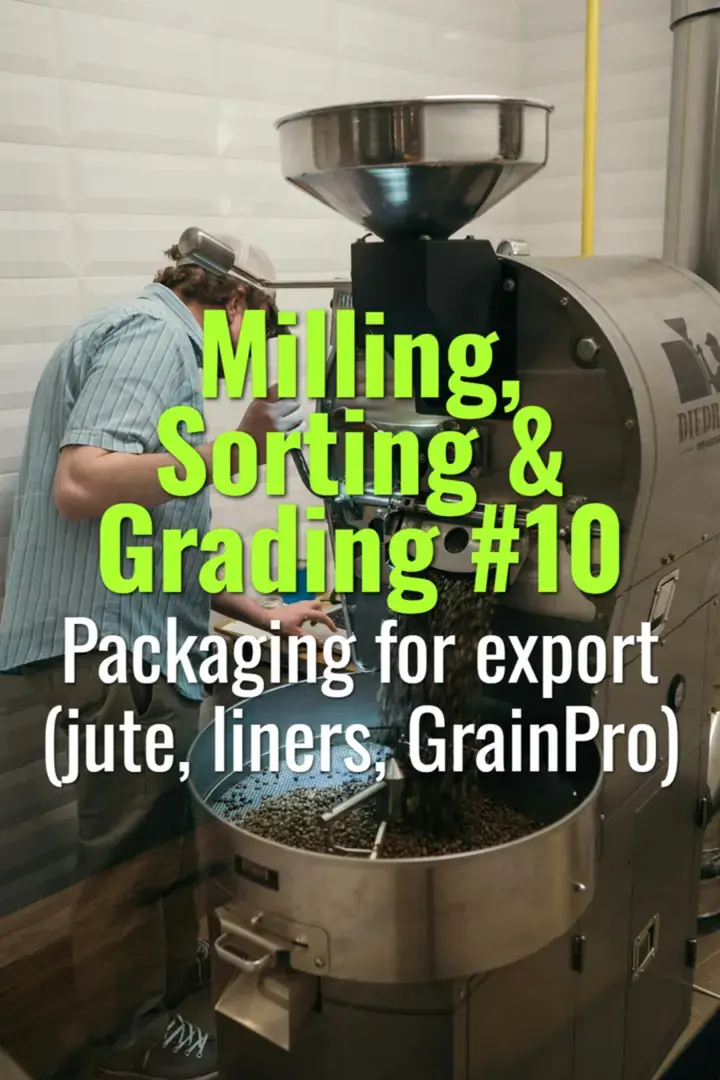Packaging for export (jute, liners, GrainPro)
This topic explains the different packaging options used for exporting coffee, including jute bags, plastic liners, and hermetic solutions like GrainPro, with their respective benefits and limitations.
- Coffee Basics Nerds
- 2 min read
Article 10 of 12 in Milling, Sorting & Grading/

Jute Bags
- Most common packaging for green coffee exports.
- Natural fiber, breathable, biodegradable.
- Advantages: Affordable, durable, widely available.
- Limitations: Allows moisture exchange, absorbs odors, limited pest protection.
Plastic Liners
- Thin polyethylene or polypropylene liners placed inside jute bags.
- Purpose: Improve moisture resistance, reduce odor absorption.
- Advantages: Affordable upgrade over plain jute.
- Limitations: Not fully hermetic, can still allow slow moisture transfer.
GrainPro / Hermetic Bags
- Multi-layer, airtight plastic liners used inside jute bags.
- Prevent oxygen, moisture, and odor transfer.
- Advantages:
- Protects against mold, pests, and rehydration.
- Extends shelf life up to 12+ months.
- Maintains flavor and freshness for specialty markets.
- Limitations:
- Higher cost.
- Requires careful handling to prevent punctures.
Containerization & Bulk Options
- Bags stacked on pallets for export.
- Some shippers use big bags (1-ton bulk bags) lined with hermetic layers.
- Increasing trend toward eco-friendly liners that reduce plastic waste.
Market Preferences
- Specialty markets: Expect GrainPro or similar hermetic packaging.
- Commodity markets: Often accept jute with or without liners.
- Certifications (e.g., Organic, Fairtrade): Require packaging to protect integrity and prevent contamination.
Best Practices
- Always use clean, food-safe bags.
- Store on pallets, not directly on container floors.
- Ensure containers are dry and fumigated if required.
- Label each bag with lot codes and origin information.
Lasting Importance
Export packaging is more than logistics—it’s a final safeguard of quality. Jute, liners, and hermetic solutions like GrainPro represent increasing levels of protection, helping farmers and exporters deliver coffee that arrives fresh, stable, and defect-free to international buyers.
You might also like:
- Tags:
- Lasting Importance
- Green Coffee
- Best Practices
- Shelf Life
- Specialty Markets
- Lot Codes
- Requires Careful
- Jute Bags
- Organic Fairtrade
- Hermetic Packaging
- Coffee Arrives
- Eco Friendly
- Certifications Organic
- Hermetic Bags
- Food Safe
- Inside Jute
- Oxygen Moisture
- Multi Layer
- Plastic Liners
- Safeguard Quality